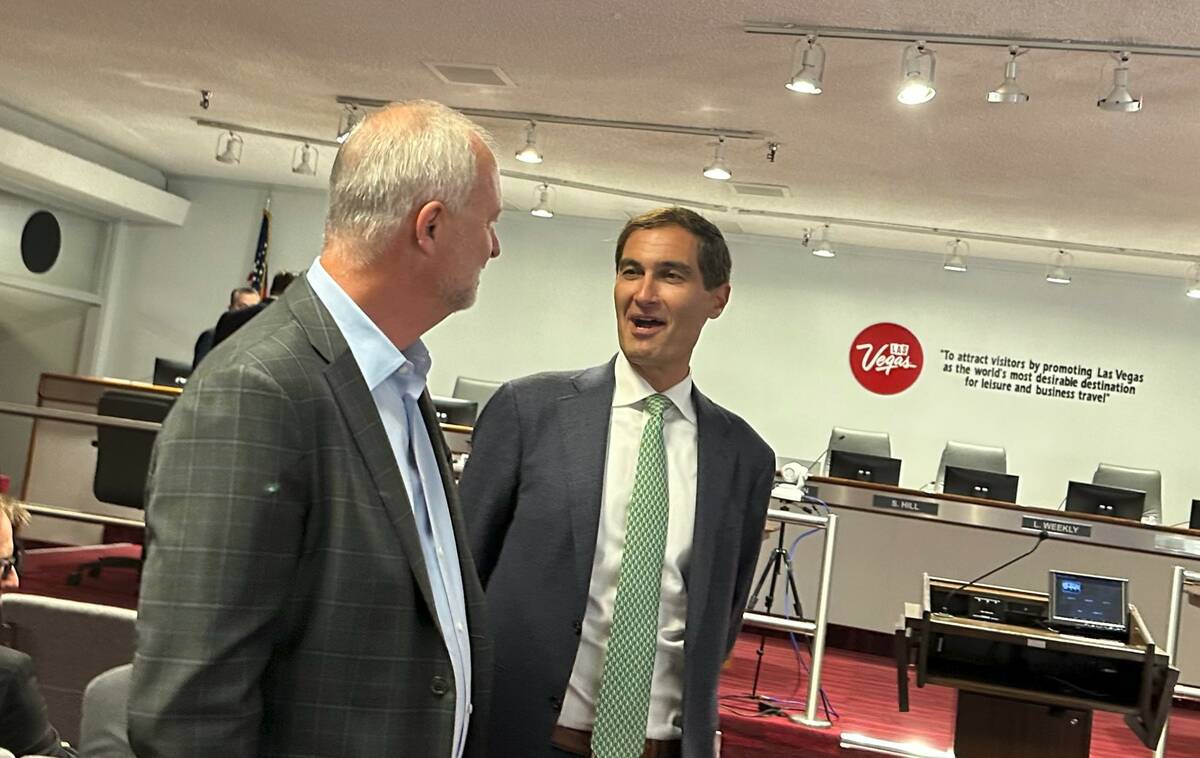A’s community benefits plan on stadium group’s agenda
The Oakland Athletics’ development agreement for its planned Las Vegas ballpark is not on Thursday’s Las Vegas Stadium Authority meeting agenda, but the potential approval of the team’s community benefits agreement is.
The lack of a stadium development agreement should not be cause for concern, as the finalization of the Raiders development agreement took several months before construction began on Allegiant Stadium. A development agreement includes a full breakdown of the stadium construction process, including how it will be financed. The Raiders stadium development agreement document was over 300 pages long.
The Athletics’ community benefits plan lays out how the team’s planned move to a $1.5 billion, 33,000 capacity ballpark on the Strip will benefit Southern Nevada. The parameters of the agreement were established by Senate Bill 1, the A’s stadium public funding mechanism signed into law last year, which earmarks up to $380 million in state and Clark County contributions toward the project. A first draft of the community benefits agreement was presented at an October stadium authority meeting.
The latest version of the plan included in the authority’s meeting agenda lays out requirements including a minimum financial commitment, workforce diversity goals for both construction and stadium workers, livable wages, infrastructure projects to ensure the high-impact project has as little as an impact on the community as possible and educational support.
An annual report detailing the A’s community initiatives is required to be submitted to the stadium authority on an annual basis.
In the years the A’s ballpark is under construction, the team is required to fund a minimum of $500,000 in community benefits annually, with that jumping to $2 million per year, or 1 percent of ticket revenue, once the stadium is open.
Fifty-one percent of the workforce during the construction of the stadium will be required to be made up of women, minorities, veterans and disabled workers. The A’s will be required to contract 15 percent of work on the stadium to small locally-owned businesses.
Once the stadium is in operation, 60 percent of workers at the ballpark will be required to be women, minority, veteran or disabled. The A’s will be required to pay stadium workers a living wage and set up an employee relief fund to assist workers in times of need.
Community involvement from the players and front office staff is also part of the agreement. That includes educational efforts, setting up youth camps and supporting youth baseball. The A’s have gotten off to a head start on that, already making multiple donations to youth baseball and softball organizations over the last couple of years, including a $200,000 contribution made this month.
Setting up an internship program and offering scholarships to area students is also required.
The A’s are also tasked with developing an art program at the stadium, to include local artists’ work. The team is also working on a partnership with the Neon Museum to feature some of their historical Las Vegas signs at the stadium, in addition to providing financial benefits and exposure to the museum.
Contact Mick Akers at makers@reviewjournal.com or 702-387-2920. Follow @mickakers on X.



















